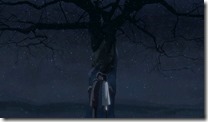 |
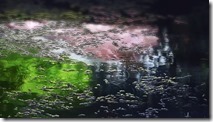 |
![Kotonoha no Niwa - Movie - Large 42[2] Kotonoha no Niwa - Movie - Large 42[2]](https://lh4.ggpht.com/-LEgG0-MnIgo/UbCVd7FgAFI/AAAAAAADJDE/5lbp7etOiuw/Kotonoha%252520no%252520Niwa%252520-%252520Movie%252520-%252520Large%25252042%25255B2%25255D_thumb.jpg?imgmax=800) |
There’s been an interesting discussion going on as regards Shinkai Makoto’s place in the echelon of great animators since the release of Kotonoha no Niwa. Much of it surrounds the technical side of his work, and how some feel it doesn’t measure up to the best in the field. While I feel Shinkai’s technical brilliance – fluid animation, cinematography, and especially the exquisite use of CGI not as a crutch, but an enhancer – can stand with anyone’s, for me that largely misses the point.
Any discussion of creative arts is necessarily subjective, and when it comes to visual art, all the more so. Nevertheless, the old saying says “I don’t know much about art but I know what I like” – and we all know what we like. For me (as I said in the review of Kotonoha) Shinkai is in a class by himself as a visual artist in anime. It isn’t so much that his skill at giving images physical form is stellar, though it obviously is – I think he could have been an incredible oil-on-canvas painter had he so chosen. Like so many great artists, what I think really sets Shinkai apart is his vision.
What do I mean by that? Quite literally, as with someone like Monet, the true genius is in how he sees the world. Shinkai somehow has an innate ability to look at a place or object and see the essence of what makes that thing unique, special and beautiful – it’s as if he sees the Platonic Ideal rather than the physical form. When I look at a person drawing on a blackboard, I see a person drawing on a blackboard and hope the chalk doesn’t squeak. Shinkai sees the flow of the hand doing the writing, the pattern of the flakes of chalk as they fly off and descend to the floor, and turns this mundane moment into something sublime and unique. I’ve been to Shinjuku Gyoen twice (both times in the rain, as it happens) but when I saw Kotonoha no Niwa I felt as if I’d never really seen the place before. Shinkai not only sees what normal people can’t see, but he has the ability to make us understand what it is he’s seeing through his technique. That, for me, is astonishing genius.
When someone says, as Shinkai-sensei did, that Laputa: Castle in the Sky (for me the most under-appreciated Ghibli work, and probably Miyazaki’s second-greatest after Mononoke Hime) is their favorite anime, I immediately take notice. It’s like when a movie critic says Empire of the Sun or A.I. is their favorite Spielberg film – I know this is someone worth listening to, because they see beyond the superficial and aren’t trying to pander to mass opinion. This is where the subjectivity of art plays into the equation of course, and perhaps this is simply an indication that Shinkai’s sensibilities are somehow compatible with mine, and that’s why I respond to his visuals so powerfully. Be that as it may, for me in order to truly appreciate why so many of us revere him as an animator, one must look past frame-rates and rendering and simply focus on the vision of the man and his ability to communicate it.


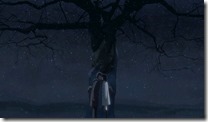
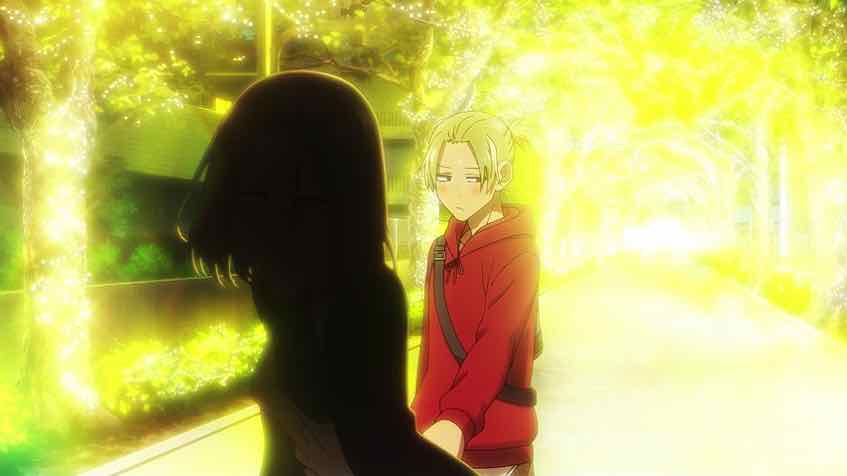
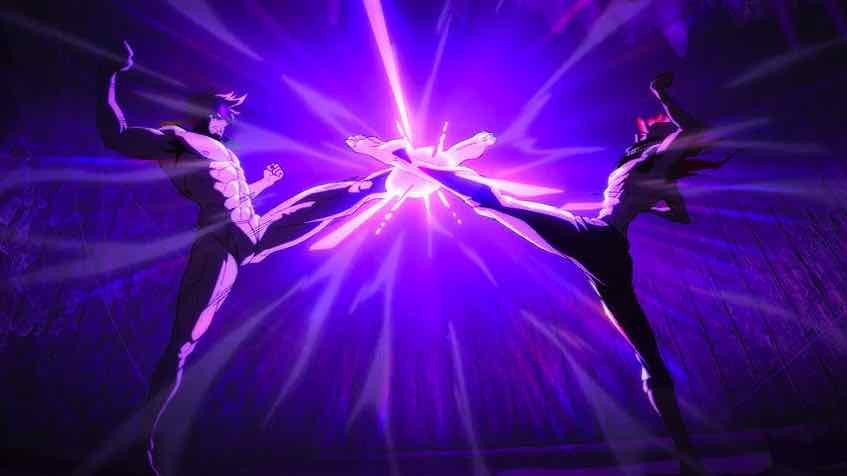
Maxulous
June 7, 2013 at 1:10 amProblem is, his vision as an artist and film director is limited.
Personally, while both are great films I'd definitely rank CitS and Mononoke below Porco Rosso and even the mainstream hit Sen to Chihiro no Kamikakushi.
Kurama Hitsugaya
June 7, 2013 at 2:18 amI've never understood the obsession with Miyazaki. He's 'good', but nothing more to me. So much of his work seems… perfunctory, that's the closest word I can think of. I would rather watch one of Shinkai's films than every film Miyazaki has ever made combined.
admin
June 7, 2013 at 2:39 amThat's a valid opinion, though certainly one I disagree with. But I certainly don't think it's in any way an either/or proposition with Miyazaki and Shinkai.
Ronbb
June 7, 2013 at 3:31 amThanks for the post, Enzo. I agree with you that Shinkai is a poet…and I find him pretty romantic.
Shinkai does have a way of seeing things that most people don't. I am amazed by his ability of seeing and communicating the beauty of things around us, but his ability to convey his own feelings of appreciation in his visuals makes him romantic in my view. I feel that his visuals not only elevate the emotions in the story but tell the story — with feelings– at the same time…as if they have a voice.
I find that Shinkai has his own way of telling a story — his ability of seeing things differently and beyond the surface comes through. The feeling of longing — whether it's hopeful or despairing — is quite a common theme, if not predominant, in Shinkai's movies. His use of visuals in setting the tone, creating the mood, and conveying the emotions is pretty effective in drawing the audience in. Probably his art takes most of the attention, but I think he manages the use sound quite well in complementing the visuals and telling his story effectively. There is always a balanced mix of silence, background noise, BGM, monologue, and dialogue. It's that balance that helps make the audience sink deeper into the story…and into feelings of its characters.
After watching Kotonha no Niwa the first time, I was thinking about Hosoda Mamoru and other acclaimed directors, but then I dropped that thought and asked myself, "am I moved?" Yes, I am, and not just this time but by most of his work. Shinkai is talented and unique in his own way, and it's the way that he conveys the emotions of his story that moves me. I am happy that I have the chance to appreciate his work.
elianthos80
June 7, 2013 at 11:17 pmIt's with posts like that makes me think how lucky we are to have found your garden of words *winks*.
While I can't really dismiss the technical side completely – I think litho in his comment under your KnN review raised some fair points. And in terms of human chara design Shinkai's templates are not my personal best . That title would probably be a tie between Kaiba, Kanashimi no Belladonna and Seirei no Moribito – I can quite agree on you in terms of vision and effectiveness, although for me the movie worked and connected a bit differently. But still the connection was there, and much like rain it eventually reached me – percolated – to the core after initially bouncing off the surface, causing ripples.
You mentioned Monet. Interesting enough his view of showing the world was achieved by going in an opposite direction than Shinkai's, visually speaking. Monet is disgregation, dissolution, apparent chaos of pigments and strokes up close, but the more you step back and look at the picture the more everything almost magically recomposes into a (literally, etimologically even) harmony, into a vibrant whole.
Shinkai is painstakingly detailed like the old Flemish masters and some early pre-Raphelites (Millais' Ophelia anyone? ). Oh yes, he would be an amazing canvas painter, be it trains, gardens, skies, or rooms. But this very detail and degree of polish is both the main strength and maybe the weakness of this movie… it's so evocative and expressive in itself the characters feel almost superfluos at times and sometimes overpowered. 5 cms per second had a better balance for me in this aspect 🙂 (especially the chapter featuring the very screenshot you have linked at the top) and it managed to hit the sublime both visually and story-wise… because it was comparatively rougher and less 'finished', there was less gap between the humans and their surroundings. But seeing how distance is one of Shinkai's key themes I guess the visual gap has to be there beyond animation technicalities.
In the end I might enjoy other directors and other artists – and the Monet way – more , but I've found out Shinkai moves me, in his own peculiar way, long after I've finished watching one of his works. And in case of KnN it reminded me of I used to perceive reality, and how that flowed into my own art. While this latest movie ending of his is more uplifting than in other works I have to thank the man for how his vision has restored mine, leaving me quietly reflective, wondering but without sadness, and healed.